
Do you have a damaged roof or one that has become too old to effectively protect you and your loved ones? If that’s the case, it’s high time to consider replacing your roof. Throughout this process, it’s essential to familiarise yourself with the average cost of a new roof and the top-quality roofing materials available, so you’re on the right page!
In this article, you will learn about:
- When you should renew your roof
- The types of roofing materials
-
How to calculate the cost of a new roof
- A smart roofing solution: Integrated solar metal roofs
- Roofit.Solar, an award-winning integrated solar roof company
When should you renew your roof?
The lifespan of a roof is influenced by a multitude of factors, each playing a crucial role in determining its longevity and overall performance. Understanding these factors can help homeowners make informed decisions about when it might be time to replace their roof.
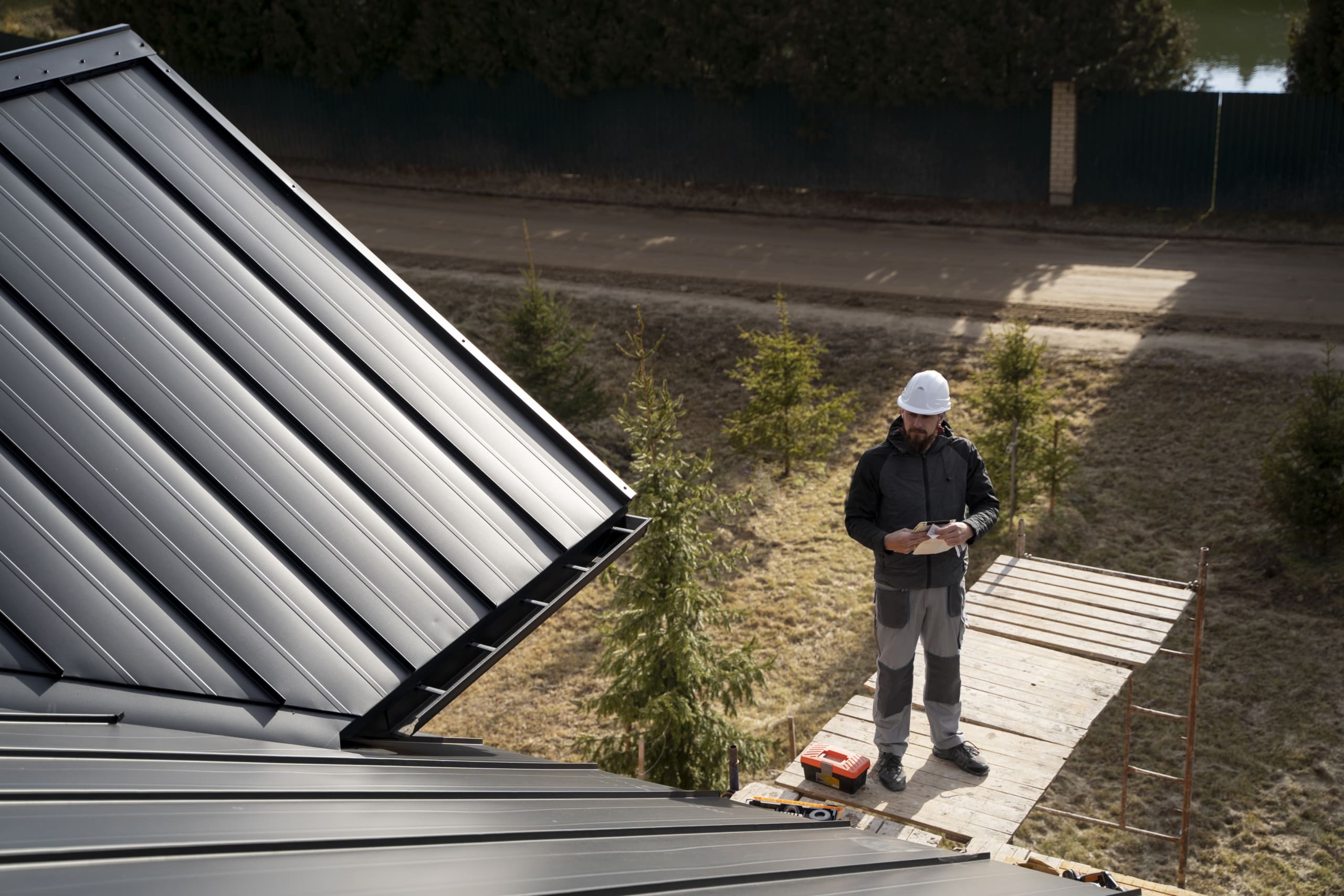
Photo by Freepik
Here are some signs that it may be time to replace your roof:
Age: Most roofs last between 15 and 25 years, depending on the material. If your roof is approaching or exceeding its expected lifespan, it’s a good idea to have it inspected by a professional to assess its condition.
Damage: Damage to the roof can take many forms, including missing or cracked shingles, leaks, or signs of water damage inside the house.
If you notice any of these problems, it’s important to have a professional assess the damage and determine whether repair or replacement is necessary.
Energy efficiency: If your energy bills have been rising, it’s possible that your roof is no longer providing adequate insulation. Replacing the roof with a more energy-efficient material, such as metal or a cool roof, can help reduce your energy costs.
Appearance: If your roof is old or damaged, it may be detracting from the appearance of your home. A new roof can not only improve the appearance of your home but also increase its curb appeal and value.
Weather events: Extreme weather events such as hailstorms, high winds, or hurricanes can cause significant damage to your roof. If the damage is significant, it may need to be replaced.
Safety: It’s important to have your roof inspected by a professional at least once a year to assess its condition and identify any potential problems before they become more serious. It’s also a good idea to have your roof inspected after a major weather event or if you suspect there may be damage.
If you’ve ticked any of these off your list, it’s time to consider replacing your roof for a variety of reasons from safety to energy efficiency.
What are the best roofing materials?
When exploring possibilities for a new roof, numerous roofing materials with their unique advantages and disadvantages come into consideration.
This variety of options makes the decision-making process all the more critical for homeowners.
Below are some common roofing materials:
Asphalt shingles: These are popular in North America and Europe due to their affordability, durability, and ease of installation.
Metal roofing: Increasingly popular for their durability, energy efficiency and aesthetic appeal, metal roofs are available in a variety of materials including aluminium, steel, and copper.
At Roofit.Solar, we use sleek black metal roofing combined with photovoltaic (PV) technology. As a result, our integrated solar roofs have it all – they are safe, durable, and aesthetically pleasing.
Find out more about what makes our integrated solar metal roofs safe and durable!

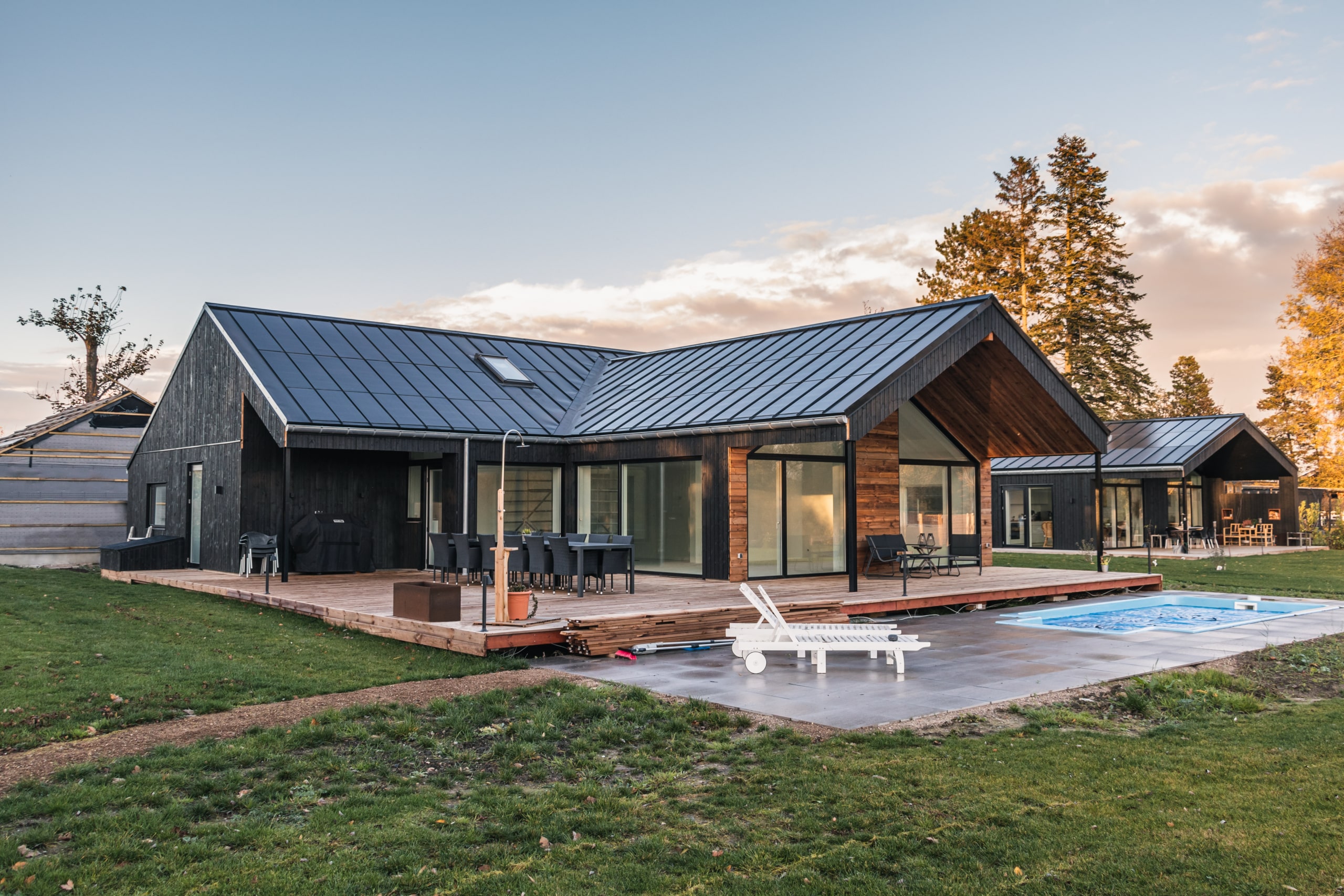
Clay or concrete tiles: Suitable for Mediterranean-style homes, these materials offer durability, energy efficiency, and an aesthetic appeal.
However, they can be more expensive and require additional maintenance.
Slate: A natural stone material known for its exceptional durability and fire resistance, often seen in historic and upmarket homes. However, it tends to be more expensive than other options.
Wood shingles or shakes: With rustic look, wood roofs require more maintenance and are susceptible to fire damage.
Synthetic roofing materials: Affordable alternatives to natural materials such as plastic or rubber, offering both durability and visual appeal.
The choice of material depends on factors such as the style of the house, the local climate, building regulations, and the homeowner’s budget and preferences. A roofing contractor can help homeowners choose the most suitable material for their specific needs.
How to calculate the average cost of a new roof
In this section, we will delve into the factors influencing roofing costs and provide you with valuable insights to help you make an informed decision about this significant investment in your home.
The cost of replacing your roof is influenced by several key factors, each of which plays a crucial role in determining the total cost:
- The size of your home: As you might expect, the size of your home has a direct impact on the cost of a new roof. Larger homes require more materials and labour, resulting in higher costs for the roofing project.
- Roof pitch: The slope of your roof can significantly affect the complexity of the installation process. Roofs with steeper slopes require more labour and expertise, increasing the overall cost.
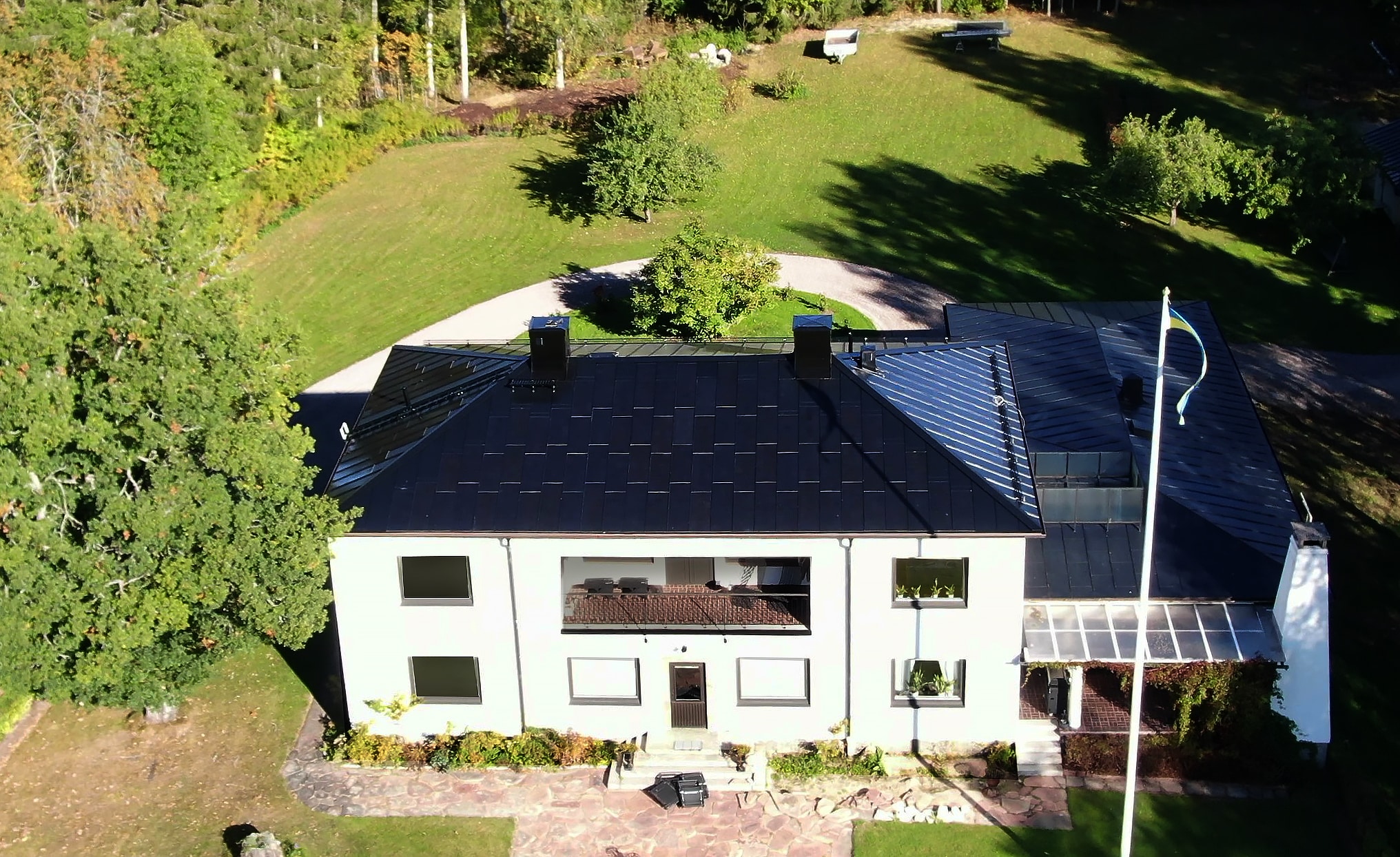
- Condition of the existing roof: If your current roof is in poor condition, the project may require removal and disposal of the old roofing materials, adding to the cost of the new roof installation.
- Type of underlayment: The choice of underlayment is critical to protecting your roof from leaks. The type of membrane you choose will affect the overall cost of your roof replacement.
- Regional labour costs: Labour costs can vary significantly from region to region. Local labour rates in your area will have a direct impact on the total cost of your roofing project.
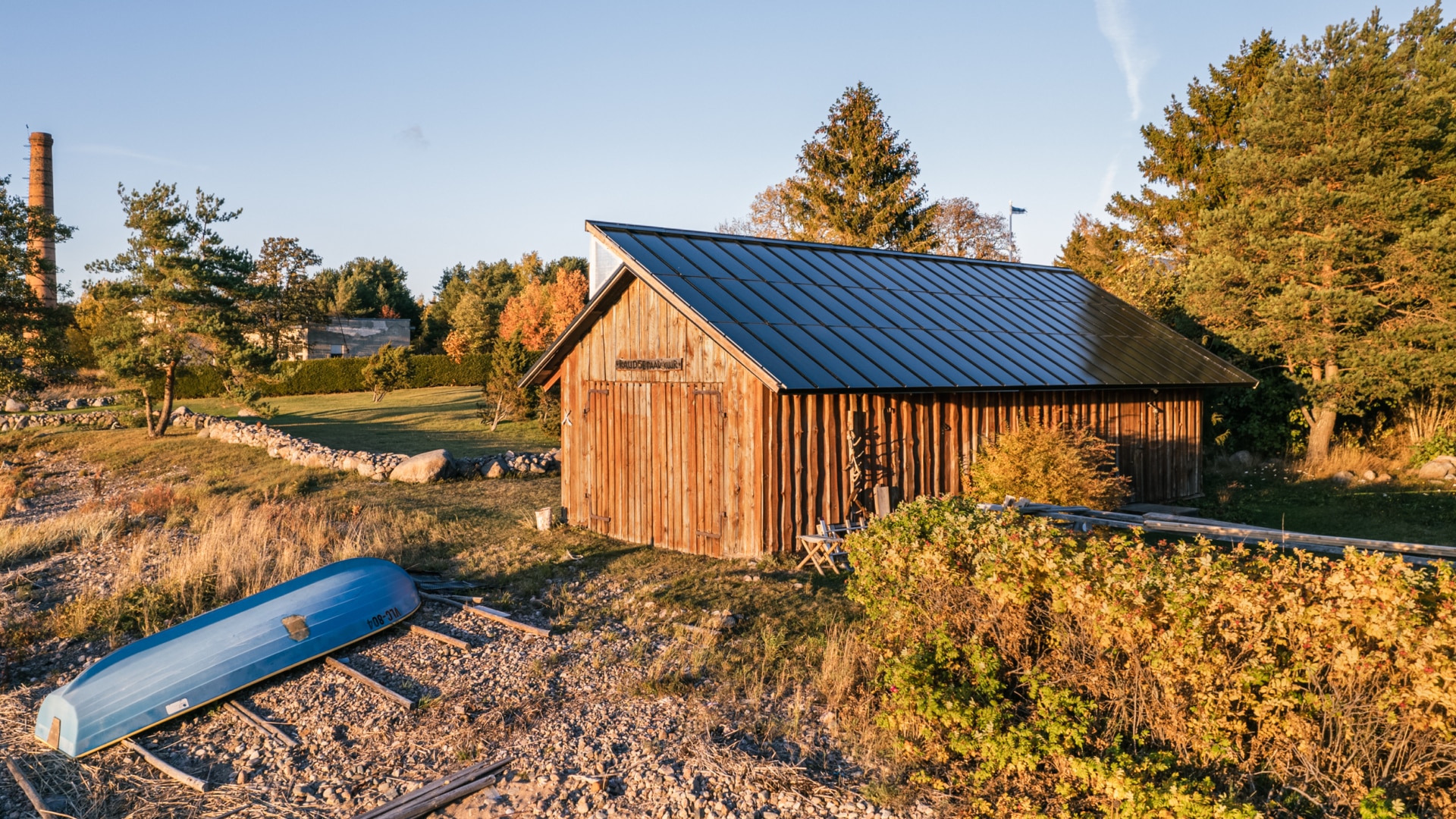
By understanding these factors, you can better estimate the cost of your new roof and make informed decisions that meet your budget and requirements.
Depending on all these factors, and whether you’re using asphalt shingles, concrete tiles, metal roofing or slate, the cost can range from €400 to €2,500 per square metre. It’s important to recognise that roofing costs can vary considerably between European countries due to a number of factors including materials, labour and regional economic conditions.
Go solar with Roofit.Solar while renewing your roof
Replacing your roof is a great reason to go solar. A 2-in-1 solution with a premium metal roof combined with PV.
At Roofit.Solar, our products are created with a focus on using the highest quality materials. Our integrated metal roofs combine traditional roofing techniques with attractive aesthetics and proven photovoltaic (PV) technology.
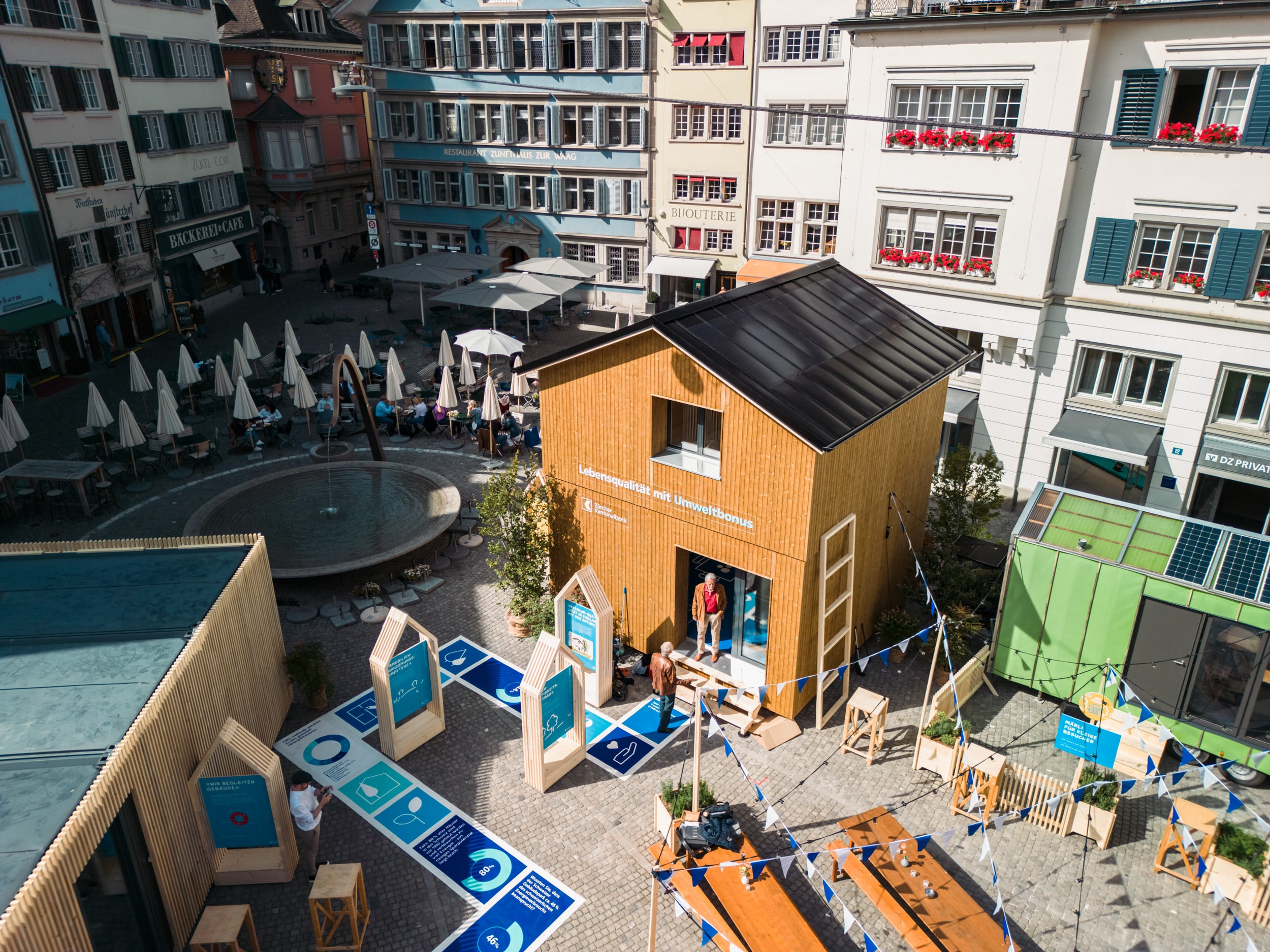
Swedish-made SSAB quality metal is enhanced with fully integrated mono PERC cells, a widely used solution in the PV industry. This lightweight design sets it apart from standard modules and makes it almost invisible from a distance.
Looking for a strong roof that can withstand harsh weather conditions? Roofit.Solar has you covered (literally)! Our metal roofs are coated with GreenCoat® coating, a premium quality Nordic steel. This robust material is well suited to withstanding harsh weather conditions, making it suitable for even the most demanding weather conditions.
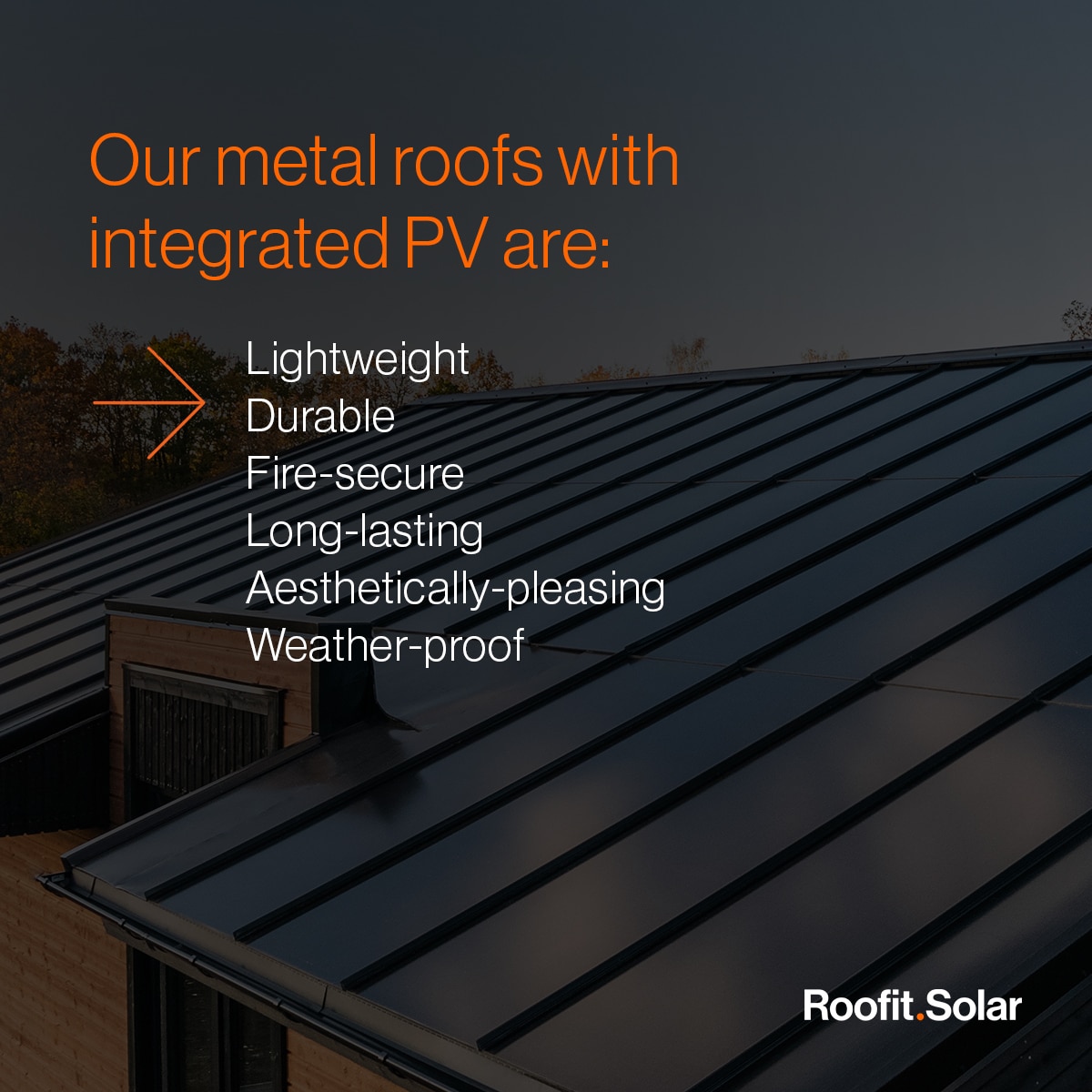
What makes us different?
Here’s a breakdown of ten key aspects of our integrated PV metal roofs, highlighting how they differ from standard solar panels:
- Lightweight construction: Our metal roofs are designed to be lightweight for greater convenience.
- Fire-resistant construction: Our products undergo rigorous safety testing and incorporate arc-fault interrupters in the inverters for added fire protection.
- Increased durability: The metal backing makes our metal solar roofs resistant to rotting, rusting, splitting, and cracking.
- Stronger backing: Unlike conventional panels with a 0.3mm plastic backing, we use a robust 0.5mm steel backing.
- Corrosion resistance: The 0.5mm steel prevents the diffusion of water vapour and oxygen, resulting in slower ageing of Roofit.Solar products.
- Integrated solution: Our PV modules are seamlessly integrated into the overall roof structure, increasing the strength of the roof compared to traditional roof-mounted panels.
- Improved Mechanical Stability: Smaller modules with more points of support from the roof structure improve mechanical stability.
- Snow Load Resilience: Even under heavy snow loads, our modules resist micro-cracking and maintain consistent productivity.
- Snow Load Testing: Rigorous snow load testing ensures minimal productivity loss, as detailed in our upcoming sections.
- Extended service life: Our SSAB metal has a life expectancy of 50-100 years, ensuring the longevity of your investment.
Find out what makes our roofs safe and durable!
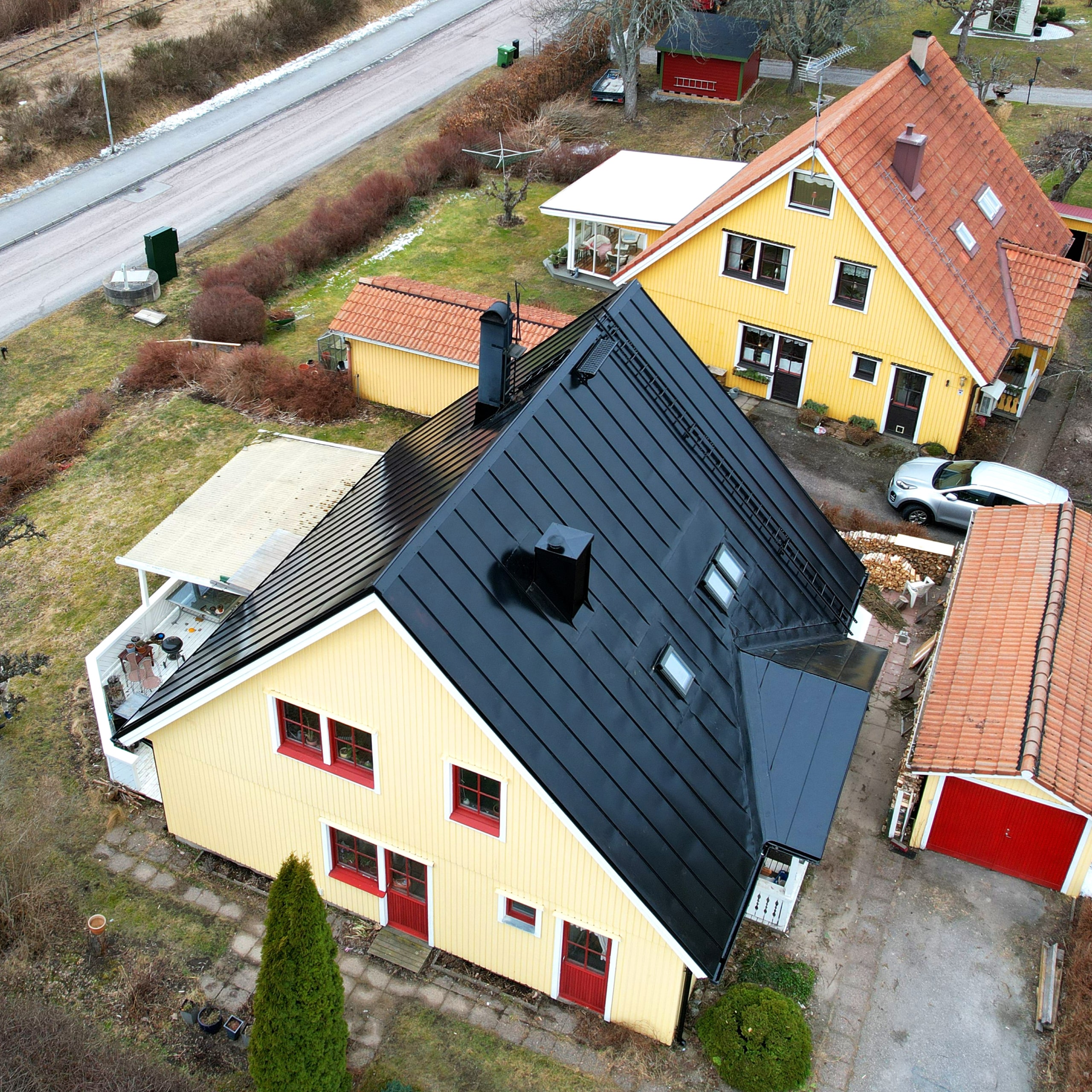
The choice of metal for our roofs is based on its exceptional durability, making it a highly preferred roofing option. With Roofit.Solar, you not only get a high-quality metal roof but also the added benefits of integrated PV technology, enhancing the overall value and performance of our roofing solutions.
Want to learn more? Find out all about why you should go solar with Roofit.Solar!
If you are planning to replace your roof, request a quote today and start your solar journey with Roofit.Solar!